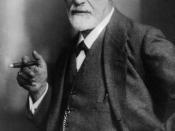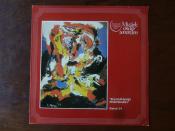The Turn of the Screw by Henry James is a ghost novel written in a purposefully ambiguous way that opens the novel up to an open-ended approach to criticism and interpretation. One of the more common ways that critics use to critique and analyze this novel is the psycho-analytic approach that was coined by Sigmund Freud in the late 19th century and early 20th century. Because of the murky manner in which Henry James wrote this ghost story, the psycho-analytic approach seems to fit in many circumstances in the novel. James seems to hint at many themes which were impossible to explicitly state in Victorian England, and most of the "corruption" that the governess grows nearly insane over seems to be of an almost exclusively sexual nature. The governess is shown to be a possibly unreliable narrator, due to her frequent shifts of opinion about the young Miles and Flora.
On one hand, they appear to be innocent little cherubs to her, while in the next chapter they appear to be conniving, deceitful little imps that live only to become corrupted and debased by the nefarious ghosts of Quint and Miss Jessel. In a psychoanalytic reading, sexual symbols and motifs are sprinkled throughout the novel, and can easily be discerned if that is the approach that one wishes to take with this novel.
Freudian symbols can be seen throughout the novel in two key places: the place where the governess allegedly sees the ghost of Peter Quint, and the location where she spots the alleged ghost of Miss Jessel. First of all, the governess first comes into visual contact with the apparition of Peter Quint at a tall tower; a piece of imagery that Freudian psychoanalysts commonly designate as a phallic symbol. In this, then, we can, accordingly with Freud's...

![[Portrait of Charlie Parker, Tommy Potter, Miles Davis, Duke Jordan, and Max Roach, Three Deuces, New York, N.Y., ca. Aug. 1947] (LOC)](https://s.writework.com/uploads/7/70016/portrait-charlie-parker-tommy-potter-miles-davis-duke-jorda-thumb.jpg)
